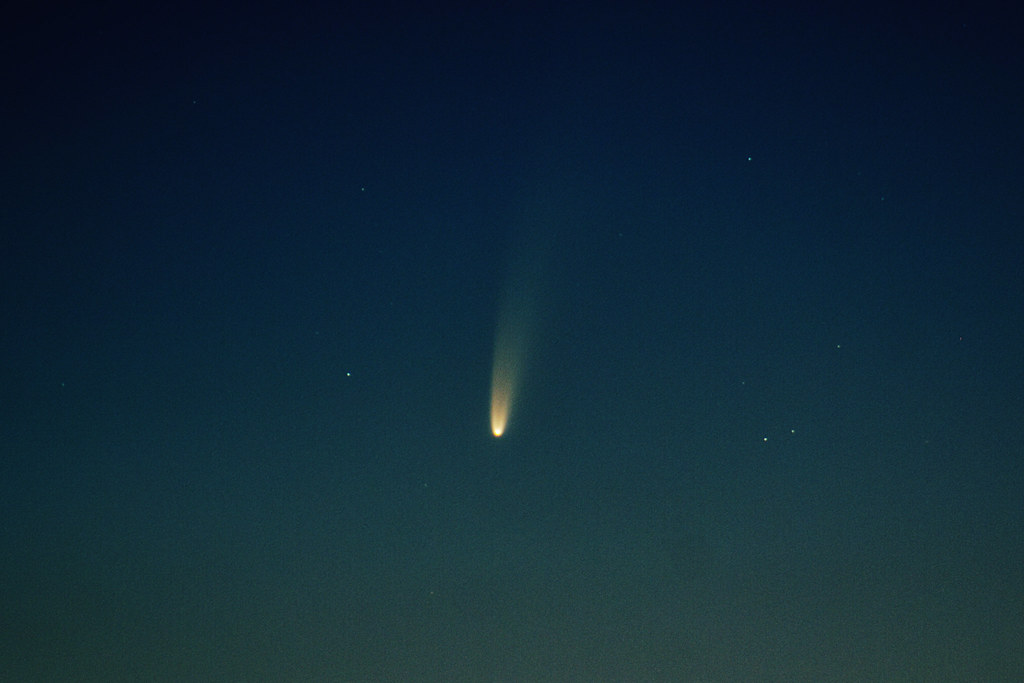Bhubaneswar: Space lovers in Odisha will get the chance to see Comet Neowise streaking across the sky from July 14 to July 30, said Subhendu Pattnaik, Deputy Director of Pathani Samanta Planetarium Sunday.
It will be visible to the naked eye from July 12, however, it will be close to horizon therefore difficult to see. From July 14 it will be seen a little higher and will be visible for little longer than the previous day. The comet’s brightness will decrease with each passing day.
Comet Neowise was discovered March 27 earlier this year by the NEOWISE (Near Earth Object Wide-field Infrared Survey Explorer) space telescope. The comet, a distant and inconspicuous object, was at that time around 312 million kilometres away from the Sun.
It was a very faint object with a magnitude of +17 — that’s about 25,000 times fainter than the faintest star that can be glimpsed through the naked eye. It was only visible with large telescopes. The comet has been listed in the ‘comet catalogue’ as C/2020 F3. The ‘C’ stands for comet and 2020 is the year of its discovery.
“The last time a comet was visible and captured at Pathani Samanta Planetarium in Bhubaneswar was ‘Hale Bupp’ in the year 1997. At that time a photograph of the comet taken at the planetarium had become very famous. After 23 years we are getting a chance to witness a comet through naked eyes once again.”
Comets are cosmic snowballs of frozen gases, rock and dust that orbit the Sun in highly elliptical path. When frozen, they are of the size of a few hundred kilometres.
When a comet’s orbit comes in close proximity with the Sun, it heats up and melts thereby releasing large amount of dust and gases into a giant glowing head often larger than most planets.
The dust and gases form a tail that stretches away from the Sun for millions of kilometres in the opposite direction. There are likely billions of comets orbiting our Sun in the Kuiper Belt. The current number of known comets is 3,650.
In the evenings to follow, the comet will rapidly climb higher in the sky and will be visible for longer periods. Around 30 July it can be seen near Ursha Major (Saptarshi Mandal) at an altitude of 40 degrees and will be visible for an hour. After July it will fade away very fast and will not be visible to unaided eye. A pair of binocular or a small telescope will enhance its visibility.
PNN
